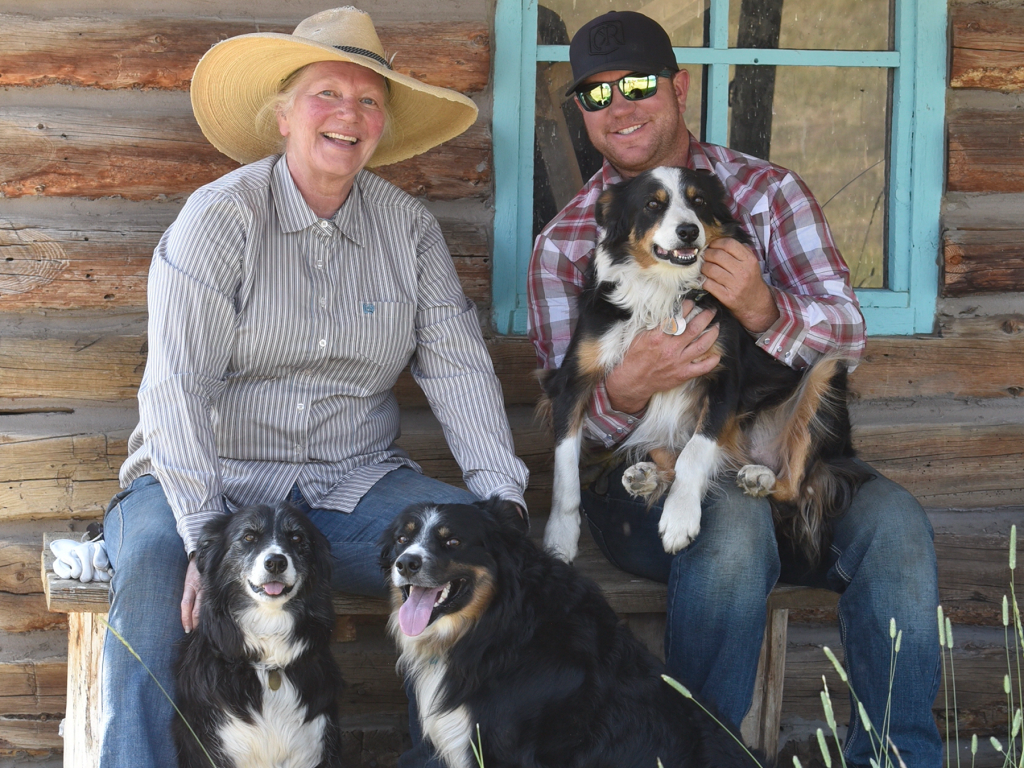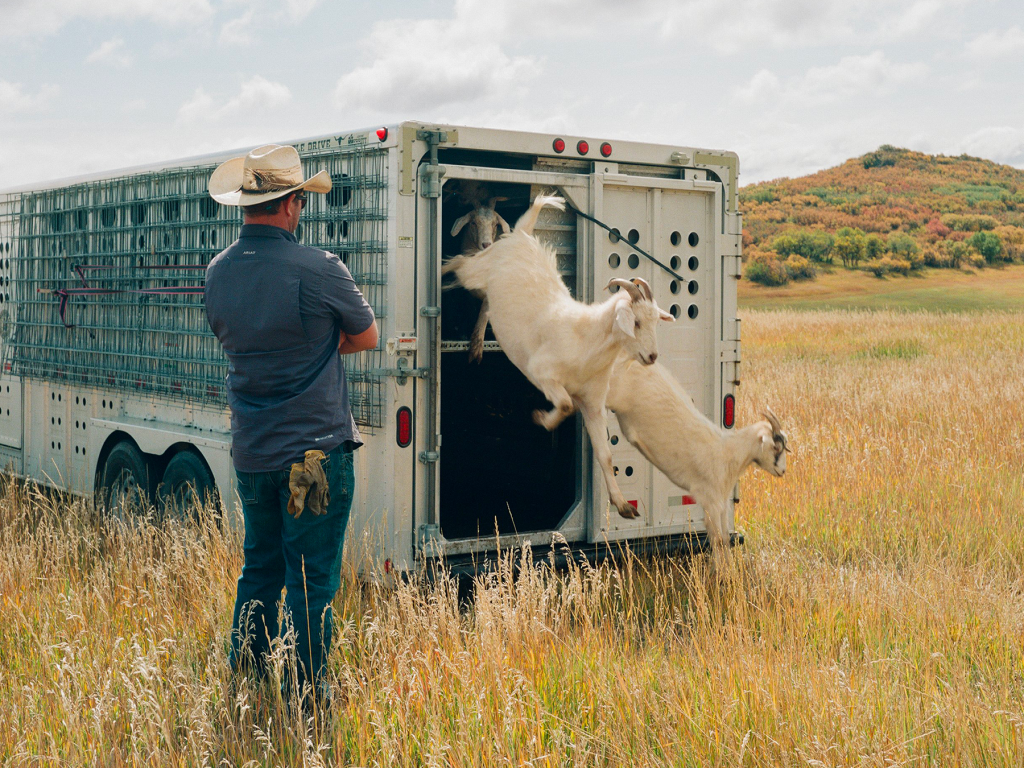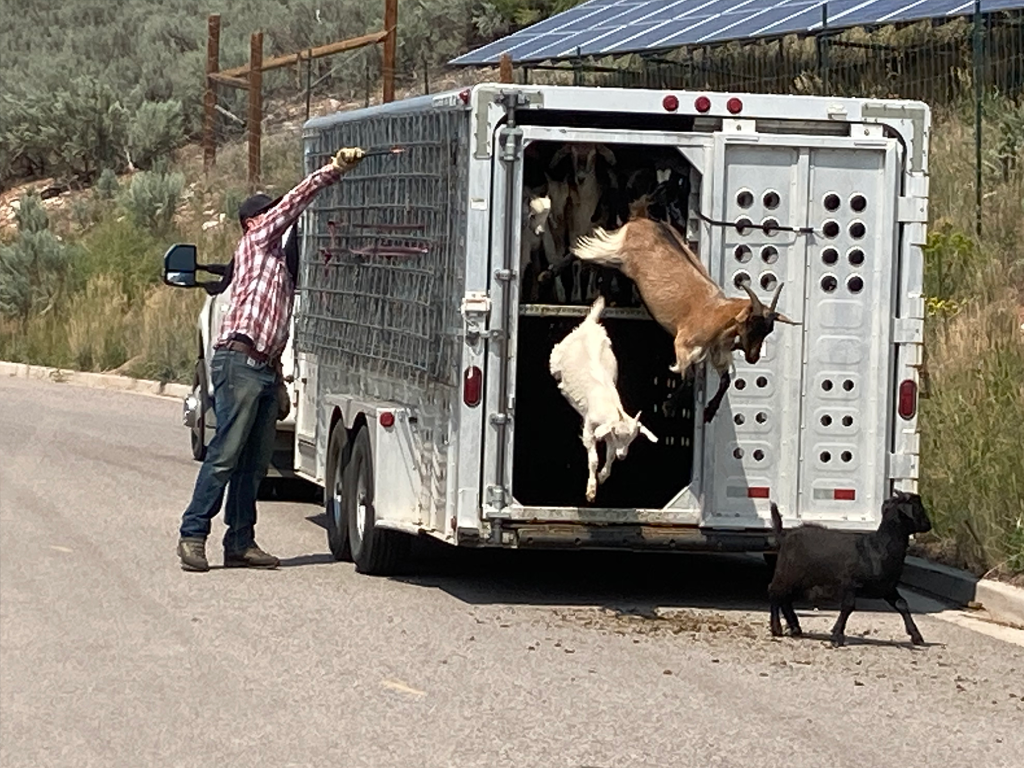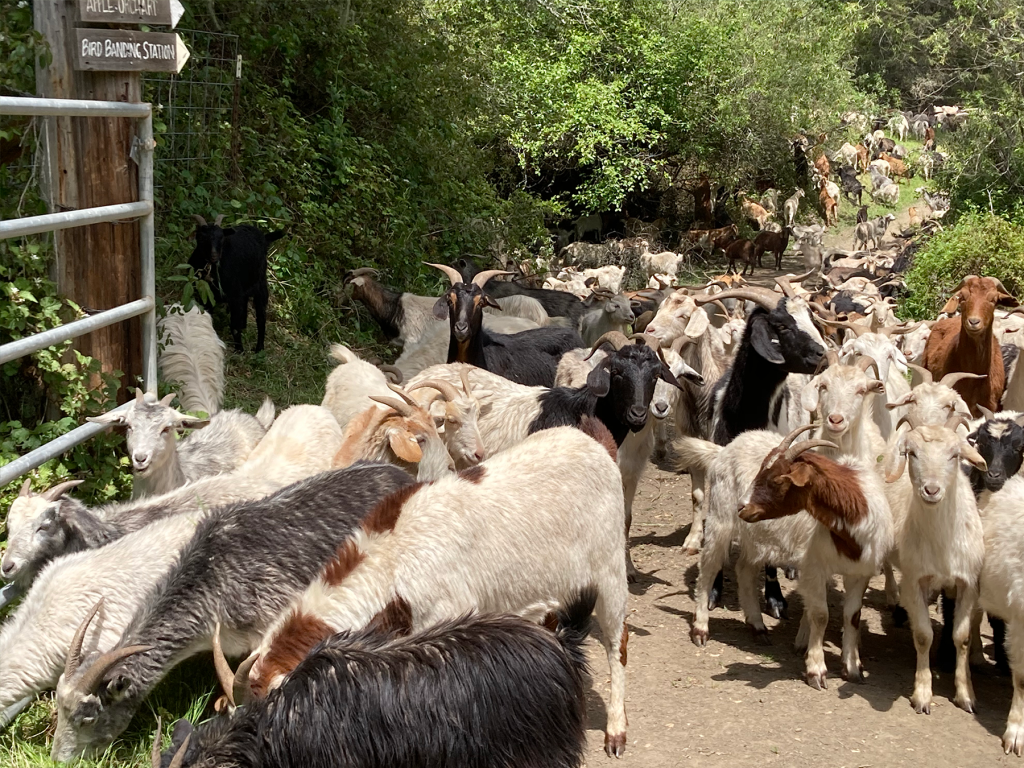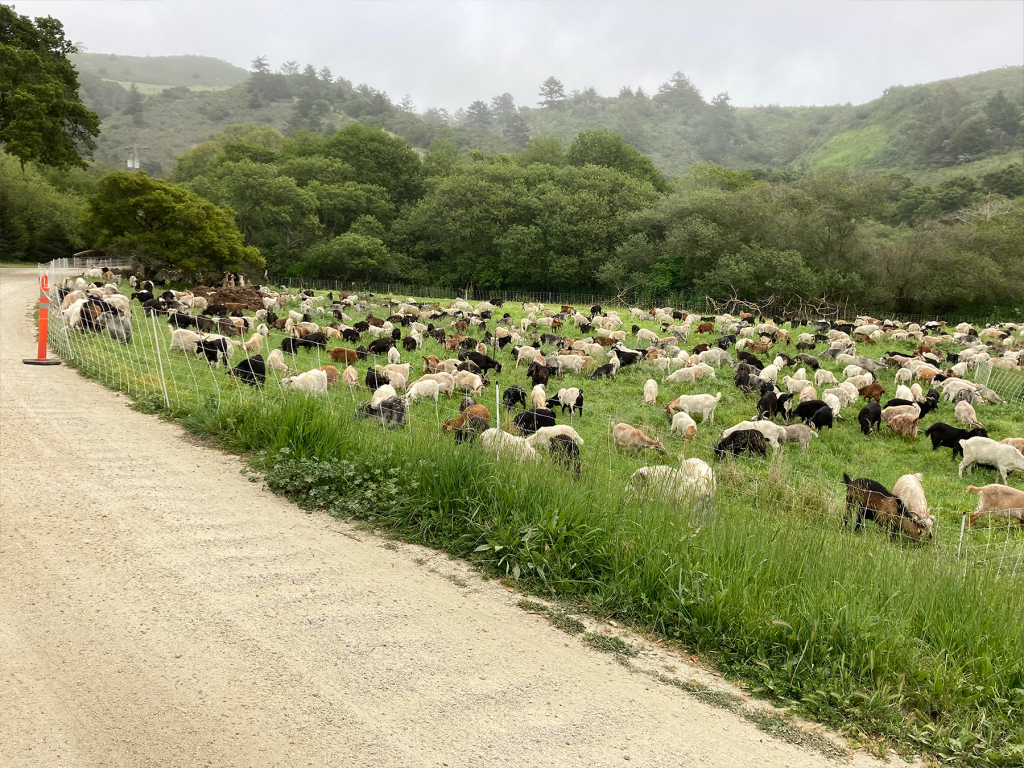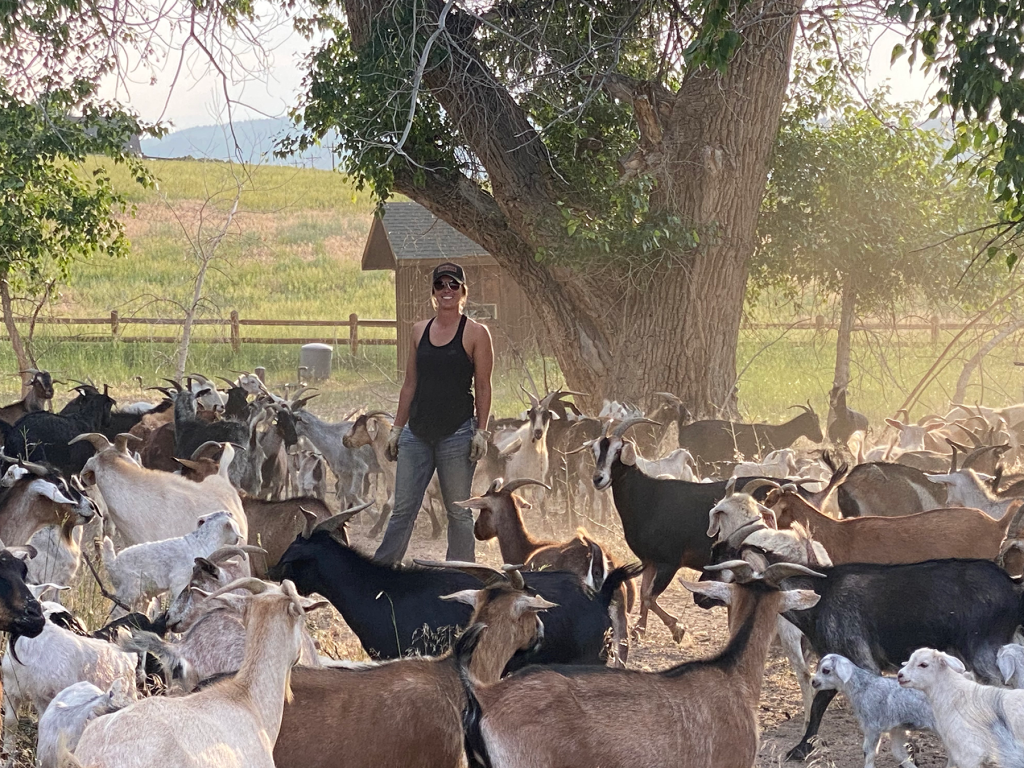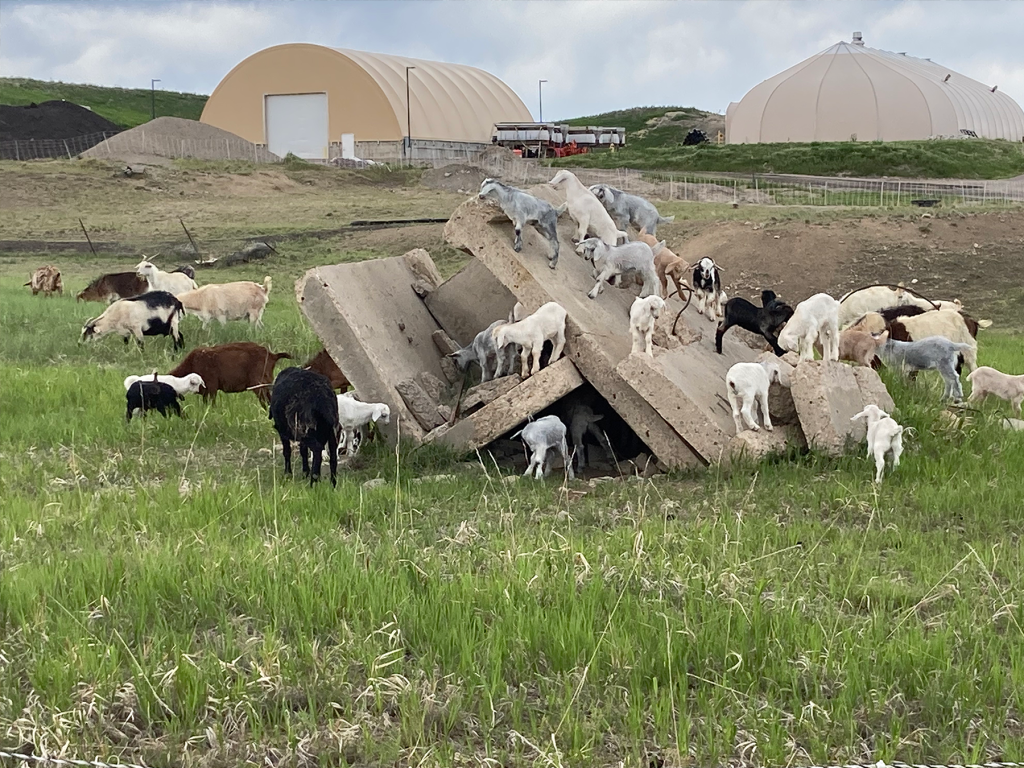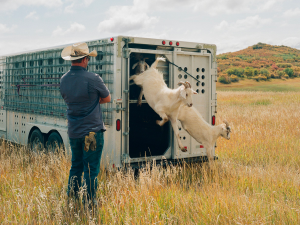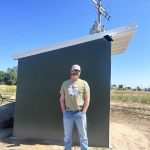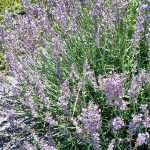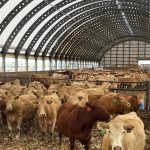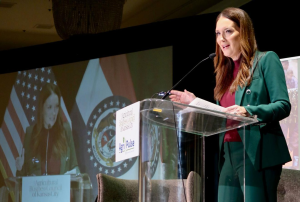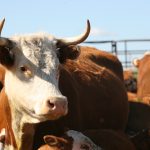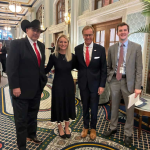2025 Fall Homeland | Goat Green: Taking on wildfires, weeds, and wastelands
With a vision and a dream, Lani Malmberg set out in 1996 to bring a chemical-free weed control option to range management.
With a master’s degree in weed science from Colorado State University in Fort Collins, Colorado, Malmberg aimed to put her knowledge to use outside of a lab. The use of goats for chemical-free, environmentally friendly land restoration piqued her interest, and she began to form a business model based on the research she did.
“I’d never seen a goat in my life at that point, but I did not want to go sell chemicals for a big company like we were slated to do with our education, so I made it up,” said Malmberg. “It worked because people were starting to question the toxicity of pesticides.”
Thus Goat Green, LLC was born (formerly Ewe4ic Ecological Services). The operation started out with Malmberg and her two sons, Donny and Reggie Benz, who at the time were 11 and 12 years old, and it grew from there.
Today, Donny is a co-owner of the business, Reggie still helps when needed, and Donny’s fiancée, Kaiti Singley, is a manager. Along with the main employees, Goat Green will often hire extra help for larger jobs.
In addition to this, Malmberg and Benz started a nonprofit organization called the Goatapelli Foundation to train and educate more people about the work they do to take care of the land and animals.
Initially intended for weed control without the use of herbicides and pesticides, Goat Green has since expanded its list of benefits. Goats eating down the weeds that other animals leave behind helps minimize fuel for wildfires, clean up borrow ditches and neighborhoods, and fertilize the land naturally.
One of the most popular of these services offered is grazing to manage wildfire risk. Scarce water supply and uncontrolled vegetation in areas increases the chance of wildfires. With an appetite for noxious plants that serve as primary fuel for wildfires, goats can graze off these areas and not only minimize the fuel for a wildfire but also recycle what they eat situ.
States from Colorado to California are turning to goats increasingly as a natural source of fire mitigation. The possibility for the small animals to navigate steep, hard-to-reach areas with rough terrain, and eat down the vegetation that makes up the fire ladder has changed the game when it comes to managing land at risk for wildfires.
What sets these animals apart when it comes to eating off vegetation in overgrown areas is
that they will bypass the grasses cattle and horses primarily eat and instead go for what is usually left behind. This trait makes goats the perfect tool to clear out at-risk areas in the battle against wildfires.
This process has other benefits as well, as it captures carbon and returns it to the soil through
the guts of the animals eating it. Little hooves trampling the ground enhances stability of the soil by pounding and massaging goat feces and urine into the ground itself, returning it to optimal chemical balance.
This herd started off with 100 goats and has now grown to consist of over 1,200, mostly of the Cashmere (also known as Spanish) type. These goats eat down vegetation in whatever area they are taken to with the goal of weed management, brush control, restoration and re-seeding, flood control and fire mitigation.
The operation is deeply rooted in family tradition, not only for the herders but also throughout the herd itself. It is made up of 28 generations of goats that have all been born and raised on the job.
Reflecting those values, these animals are never sent to slaughter. They are born into the herd and they stay “working” with it for their entire life.
In today’s business, Goat Green has two home bases located in Wellington, Colorado and near New Castle, Colorado; however, that was not always the case.
For approximately 25 years the operation thrived on somewhat of a nomadic lifestyle. Early on, the group had to travel a large distance to find work across several states. Now, there are contracts popping up in greater quantity throughout smaller areas.
“If you’re home, you’re not making money,” said Benz. “Because we’re a grazing service, you’re actually spending money. So you can’t be home very long.”
Today, Goat Green holds contracts with federal, state, county, and city governments, as well as homeowners’ associations and private landowners.
“We’ll go wherever the work is, it just has to make sense,” said Benz.
The actual process to work is different for every job depending on a variety of factors such as the land, the goal of the customer, and the expenses connected to moving the herd. In general, this service is charged per day, per goat, plus the cost of trucking the animals in and out.
Herdsmen travel with the goats and help keep watch over them, but the animals are contained to specific areas using portable electric fences and a team of five border collie dogs.
Over the years, smaller goat grazing operations have come about across the USA; however, when Goat Green started it was the first of its kind.
“I believe that’s what sets us apart from everyone else,” said Donnie Benz. “That we’ve had 30 years of experience and knowledge, and we aren’t scared. We’ve done it all and seen it all.”
In the many years of its existence Goat Green has seen just about every obstacle imaginable. From ice storms and tornadoes to dog and people attacks. Even so, they have never turned down a job because it was “too complicated.”
From running a goat herd right in the middle of city parks and open spaces to leafy pastures on large ranches in the mountains, they will get the job done.
“We go everywhere and do anything,” said Malmberg.
Nearly three decades since its beginning, Goat Green has revolutionized how people go about fire mitigation and weed control. Farmers, ranchers, and landowners not directly involved in agriculture have begun to seek non-chemical options.
From the middle of town to open pastures, this family-run business continues to prove that land management can be done by thinking outside the box. By holding fast to their values and mission, they are restoring, protecting and reshaping the future of sustainable land.
